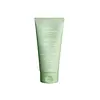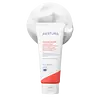What's inside
What's inside
 Key Ingredients
Key Ingredients

 Benefits
Benefits

 Concerns
Concerns

 Ingredients Side-by-side
Ingredients Side-by-side

Water
Skin ConditioningSodium Cocoyl Isethionate
CleansingGlycerin
HumectantHouttuynia Cordata Extract
Skin ConditioningCoco-Betaine
CleansingSodium Methyl Cocoyl Taurate
CleansingButylene Glycol
HumectantGaultheria Procumbens Leaf Extract
PerfumingCentella Asiatica Extract
CleansingGlyceryl Stearate Se
EmulsifyingPotassium Cocoyl Glycinate
Salicylic Acid
MaskingSodium Chloride
MaskingCaprylyl Glycol
EmollientPolyquaternium-67
Tromethamine
BufferingPanthenol
Skin Conditioning1,2-Hexanediol
Skin ConditioningEthylhexylglycerin
Skin ConditioningDisodium EDTA
Water, Sodium Cocoyl Isethionate, Glycerin, Houttuynia Cordata Extract, Coco-Betaine, Sodium Methyl Cocoyl Taurate, Butylene Glycol, Gaultheria Procumbens Leaf Extract, Centella Asiatica Extract, Glyceryl Stearate Se, Potassium Cocoyl Glycinate, Salicylic Acid, Sodium Chloride, Caprylyl Glycol, Polyquaternium-67, Tromethamine, Panthenol, 1,2-Hexanediol, Ethylhexylglycerin, Disodium EDTA
Glycerin
HumectantWater
Skin ConditioningPotassium Cocoyl Glycinate
Sodium Cocoyl Glycinate
CleansingButylene Glycol
HumectantPolyglyceryl-10 Laurate
Skin ConditioningDisodium Laureth Sulfosuccinate
CleansingGlyceryl Stearate Se
EmulsifyingCitric Acid
BufferingGlycol Distearate
EmollientAllantoin
Skin ConditioningDisodium EDTA
Ethylhexylglycerin
Skin ConditioningTetrasodium EDTA
Sodium Hyaluronate
HumectantGluconolactone
Skin ConditioningTocopherol
AntioxidantGlycerin, Water, Potassium Cocoyl Glycinate, Sodium Cocoyl Glycinate, Butylene Glycol, Polyglyceryl-10 Laurate, Disodium Laureth Sulfosuccinate, Glyceryl Stearate Se, Citric Acid, Glycol Distearate, Allantoin, Disodium EDTA, Ethylhexylglycerin, Tetrasodium EDTA, Sodium Hyaluronate, Gluconolactone, Tocopherol
 Reviews
Reviews

Ingredients Explained
These ingredients are found in both products.
Ingredients higher up in an ingredient list are typically present in a larger amount.
Butylene Glycol (or BG) is used within cosmetic products for a few different reasons:
Overall, Butylene Glycol is a safe and well-rounded ingredient that works well with other ingredients.
Though this ingredient works well with most skin types, some people with sensitive skin may experience a reaction such as allergic rashes, closed comedones, or itchiness.
Learn more about Butylene GlycolDisodium EDTA plays a role in making products more stable by aiding other preservatives.
It is a chelating agent, meaning it neutralizes metal ions that may be found in a product.
Disodium EDTA is a salt of edetic acid and is found to be safe in cosmetic ingredients.
Learn more about Disodium EDTAEthylhexylglycerin (we can't pronounce this either) is commonly used as a preservative and skin softener. It is derived from glyceryl.
You might see Ethylhexylglycerin often paired with other preservatives such as phenoxyethanol. Ethylhexylglycerin has been found to increase the effectiveness of these other preservatives.
Glycerin is already naturally found in your skin. It helps moisturize and protect your skin.
A study from 2016 found glycerin to be more effective as a humectant than AHAs and hyaluronic acid.
As a humectant, it helps the skin stay hydrated by pulling moisture to your skin. The low molecular weight of glycerin allows it to pull moisture into the deeper layers of your skin.
Hydrated skin improves your skin barrier; Your skin barrier helps protect against irritants and bacteria.
Glycerin has also been found to have antimicrobial and antiviral properties. Due to these properties, glycerin is often used in wound and burn treatments.
In cosmetics, glycerin is usually derived from plants such as soybean or palm. However, it can also be sourced from animals, such as tallow or animal fat.
This ingredient is organic, colorless, odorless, and non-toxic.
Glycerin is the name for this ingredient in American English. British English uses Glycerol/Glycerine.
Learn more about GlycerinGlyceryl Stearate Se is a self-emulsifying (SE) form of glyceryl stearate. Self-emusifying means this ingredient automatically blends with water. It is an emulsifier, emollient, and cleansing agent.
As an emulsifier, Glyceryl Stearate Se prevents ingredients such as oil and water from separating. It is also a surfactant, meaning it helps cleanse the skin. Surfactants help gather oil, dirt, and other pollutants so they may be rinsed away easily.
Emollients help your skin stay smooth and soft. It does so by creating a film on top of the skin that helps trap moisture in.
Learn more about Glyceryl Stearate SePotassium Cocoyl Glycinate is an amino acid-based surfactant and cleaning agent. This ingredient can be derived from animals or plants. It may also be synthetically created from fatty acids of the coconut and glycine.
Potassium Cocoyl Glycinate is a gentle surfactant. Surfactants help gather the dirt, oil, and other pollutants from your skin to be rinsed away. It is a mild cleanser and naturally produces foam.
Water. It's the most common cosmetic ingredient of all. You'll usually see it at the top of ingredient lists, meaning that it makes up the largest part of the product.
So why is it so popular? Water most often acts as a solvent - this means that it helps dissolve other ingredients into the formulation.
You'll also recognize water as that liquid we all need to stay alive. If you see this, drink a glass of water. Stay hydrated!
Learn more about Water